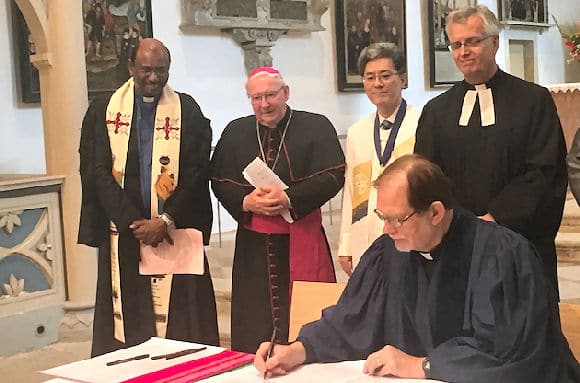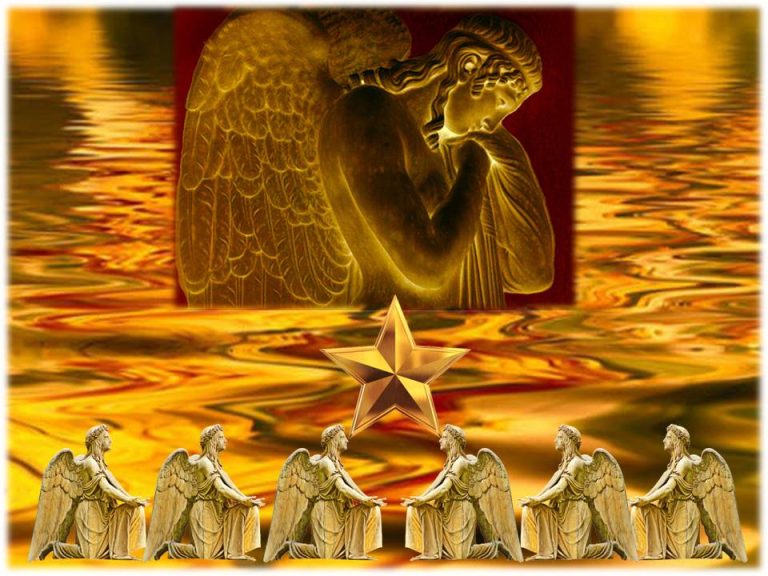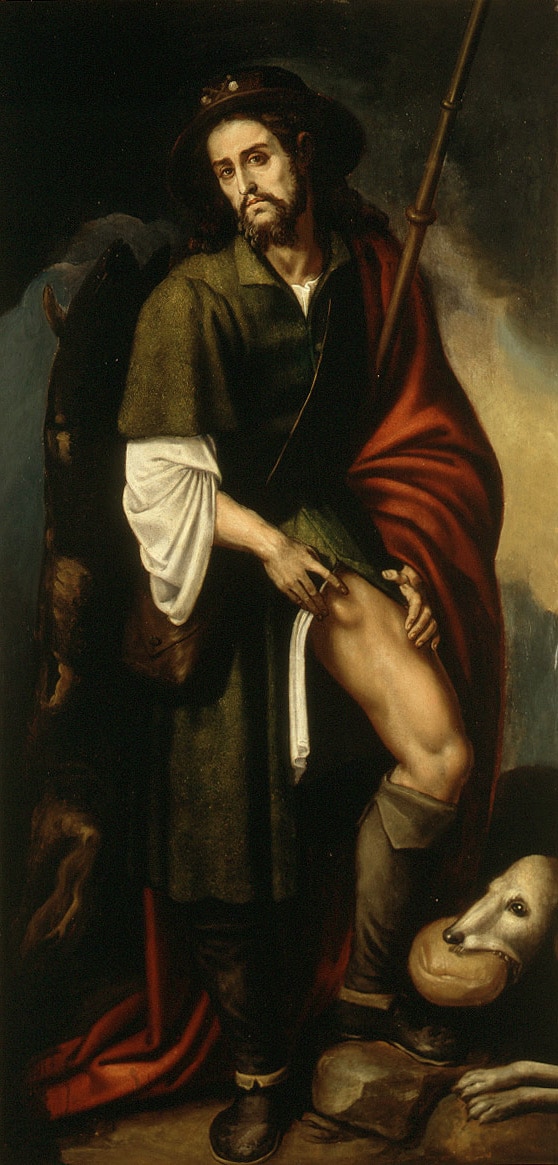Ecumenism: What is it? Is it biblical for the Christian?
Ecumenism is the movement that promotes the conciliation of all Christian churches. If this is the first time you are hearing this concept or if you have already heard it but want to know more about it, you cannot stop reading this article.
You will find: Definition and origin of ecumenism, history of the ecumenical movement, most recognized characters of this movement, whether or not it is biblical for Christians and much more.
Ecumenism: What is it?
Ecumenism seeks the unity and communion of the churches that are divided by doctrines, practices and traditions, so that they all come to fulfill God’s will “that his disciples be only one”.
It is important to differentiate Ecumenism from Interreligious Dialogue, the latter having as its objective the participation of different religions: Islamic, Christian, Abrahamic, among others.
Multiple personalities of the last century begin to agree that Ecumenism is the way to achieve the unification and reconciliation of the Christian people.
Origin of Ecumenism
The origin of this word can be divided into three different “visions”: according to historians, according to the gospels and according to the historical beginning of the church.
according to historians
The word “ecumenical” has a Greek origin. It comes from the word «Oikoumenē», which means inhabited and civilized land, universe and is linked to terms derived from oikos: house, home, economy, administration.
Different personalities (all Romans) have given their own meaning to this word with a more political-religious connotation.
Polybius: “All parts of the inhabited world («oikoumenē») have come under the rule of Rome”
Cassius Dio: ( Roman History 37,1,2; 43,14,16; 43,21,2)
Flavius Josephus wrote that King Agrippa said: “In the habitable world («oikoumenē») all are Romans” ( The Jewish War 2, 388).
according to the gospels
In the Gospels, the term ” oikoumenē ” is rarely used as such. For example, in Luke 4,5 it says: “Also, the devil tempts Jesus by offering him all the kingdoms of the earth (« oikoumenē »)”.
According to the historical beginning the history of the Church
The meaning of « oikoumenē » began to take a positive turn when Constantine I the Great convened the first Ecumenical Council of Christians in Nicaea, in 325, with the participation of bishops from all over the « oikoumenē », creating a link between the concept of universality of the Church (that is, without exclusions) and the term “ecumenical” (« oikoumenē »).
Brief history of the ecumenical movement
The ecumenical movement has been marked by different objectives, for this reason, we can divide its history into two main stages:
First Stage (1910-1937)
All specialists agree (and date) that this movement had as its beginning the Edimburg Conference (1910), in which the creation of a Continuation Committee (later named “International Missionary Council”) arises.
In the year 1914, Robert Gardiner had sent a letter of invitation in Latin to Cardinal Pietro Gasparri. Pope Benedict XV had replied that “he considered himself to be the source and cause of the unity of the Church”, despite the fact that, in 1916, through the Romanorum Pontificum he asked them to pray for the unification of the Church with a prayer disclosed in the US, blessed by Father Pius X and approved by the US bishops.
In 1919, a delegation of Episcopalian bishops reached out to different European churches. Upon arriving in Rome, they were received by Benedict XV, who told them that the only one available was on his return to the Catholic Church. For the first time, Nathan Söderblom, in an open letter, proposed the creation of an Ecumenical Council of Churches, which was named C.OE.E.
Between 1920 and 1921 meetings and conferences arose from which a committee was established that would strengthen the foundations of the “Faith and Order” movement in Geneva, while the “International Missionary Council” would be founded in London. At the same time, a series of informal debates will begin between Catholic and Anglican clerics, whose main objective or intention was to study the possibilities of a meeting between the Catholic Church and the Church of England.
In 1925 at the Conference of Practical Catholicism (Stockholm) a violent attack was unleashed by the Catholic canon Charles Journet against practical Catholicism in his book L’union des églises et le Chatolicsme pratique , for which the first “Conference had to be rescheduled”. World of Faith and Order”, taking place at last in Lausanne, after two long years (1927).
One fact that we cannot ignore in this first stage is that in 1928 Pope Pius XI published his encyclical Mortalium Animos, in which he spoke harshly about the first initiatives of the ecumenical movement.
In 1929, the first serious evaluation of ecumenical work by Catholics was made, with Max Pribilla sj’s book: Um kirchliche Einheit , Stockholm, Lausanne, Rome and in 1930, Nathan Söderblom, a Swedish Lutheran archbishop received the Nobel Prize of Peace for his work uniting churches for peace.
Second stage (1938-1991)
This second stage coincided with the history of the “World Council of Churches” (WCC). Its statute with a provisional date of 1938 was not developed until 1948 in Amsterdam due to the explosion of the Second World War. The council defined itself as a “community of Churches that recognize Christ as God and Savior.”
Since its constitution, 7 general assemblies have been established: Amsterdam (1948), Evanston (1954), New Delhi (1961), Uppsala (1968), Nairobi (1968), Vancouver (1983) and Canberra (1991).
In the mid-nineteenth century, a new unifying and reconciling current arose among all those who invoke Jesus Christ as God and head of the Church, generating a change in mentality and giving a new air of respect, acceptance, tolerance, freedom of conscience and human rights. .
Anglican clerics of the “High Church” belonging to the “Oxford movement” such as Newman, Pusey, Froude, among others, established a new concept of catholicity (Anglican Catholic communion of world proportions) and a different concept of unity (theory of the three branches).
As for the Catholic Church, Pope John XXIII promoted a change of direction by creating the “Secretariat for the Promotion of Christian Unity”, later named the “Pontifical Council for Christian Unity”, a preparatory commission to Second Vatican Council, in which Cardinal Augustin Bea was appointed as the first president of the newly created Secretariat (June 6, 1960).
The words announced by John XXIII on his deathbed manifested his commitment to the ecumenical movement: “I offer my life for the Church, for the continuation of the Ecumenical Council, for peace in the world and for the union of Christians… My days in this world have come to an end, but Christ lives and the Church must continue with its task”.
In 1865, the Anglo-Catholics responded with a letter of clarification to Cardinal Patrizi, generating the first confrontation about the Christian union movement, said act, interrupted the movement for a while, it did not extinguish it and it resurfaced years later.
The first meeting of Bishops in Anglican communion takes place in Lambeth (1867) established a meeting every ten years, starting almost simultaneously the world alliances of historical confessions such as: Reformed World Alliance, Lutheran World Federation, Baptist World Alliance, among others. (Protestant churches).
Youth movements began to gain importance both internationally and interfaithly from 1844 when the YMCA (Young Christian Association) was born. Then, it will be followed by: YMCA: Young Women’s Christian Association (1844), WSCF: World Student Christian Federation and SCM: Student Christian Movement (both in 1985).
The World Federation of Christian Students was oriented towards the mission, so it decided to create international missionary societies in Africa and Asia, becoming a great promoter (both in Protestantism and in Catholicism) of many ecumenists of the 20th century.
In 2004, the religious-ecumenical community of the Missionaries of Sacramental Love was established, oriented towards the creation of social projects that promote love and service, solidarity works and oratories where universal prayer is promoted and not religious debate.
Ecumenism, why and for what?
In Florence (1439) a temporary union was achieved between the Catholic and Orthodox Churches, however, after more than five hundred years, Ecumenism continues to generate actions that promote the unity of all Christians, which for various reasons continue divided and some opposed.
It seems like a never-ending war, but the late Pope John Paul II, in his very particular style, wrote: “Ecumenism, the movement in favor of Christian unity, is not just a mere ‘appendix’ added to the traditional activity of the Church. On the contrary, it belongs organically to his life and his action and must, consequently, be inspired and be like the fruit of a tree that, healthy and lush, grows until it reaches its full development”.
This gives us an air of hope that in the future the churches can achieve the long-awaited union and we all become one.
Is it biblical for the Christian?
The objective is marked: a single faith and a single Eucharistic communion, expressed in worship and common life in Christ.
We could define ecumenism in more general terms as “a movement that promotes worldwide unity among all religions through greater cooperation”, however, we will define it as: “the movement towards unity among Christian groups” as a way of not create confusion.
Now, given these concepts, the following questions arise: Are the initiatives promoted by the ecumenical communities correct and biblical? Is it right or necessary to get involved with other “Christians” in joint activities at the local, national or international level? The answer, a resounding NO.
Although unity among Christians is extremely important (Psalm 133:1; John 17:22), what happens when some professing Christians actually deny fundamental aspects of the faith? This is where we must analyze each situation individually. Are those we are joining truly Christian? (Biblically speaking) These are questions that we must ask ourselves in order to later make decisions that honor God.
Many people, institutions and organizations disclose actions “In the name of Christ”, and even declare that “He is the Lord and Savior”, but they contradict themselves by rejecting fundamental aspects about the nature and work of Christ described in the Bible.
Some examples of this are the Mormons and Jehovah’s Witnesses, who deny or underestimate the inspiration and authority of the Bible (2 Timothy 3:16), the exclusive character of salvation in Christ (John 14:6; 1 Timothy 2: 5) and complete dependence on God’s grace for salvation, apart from human works (Romans 3:24, 28; Galatians 2:16; Ephesians 2:8-9).
Today, there are great differences between evangelicals and Roman Catholics. Biblical Christianity and Roman Catholicism are two different religions that not only practice different things, but also their beliefs about salvation, authority in the Bible, priesthood of their believers, work of Christ, among others, are totally different. It is these notorious differences that have made it impossible to achieve a joint objective. Those who deny this only show that they are not faithful to what they say they believe.
Any Catholic (who is serious about their faith) will reject what a staunch evangelical Christian believes and vice versa.
One of the attractions of ecumenism is that despite their differences we also find common goals, for example, both biblical Christians and other groups opposed to it maintain a firm position in favor of life, a traditionalist vision regarding the family and their values, the idea of helping the sick and homeless and a fervent desire for justice and peace in the world, hence the temptation to unify them.
Another relevant question to consider would be: what is the ultimate goal of this ecumenical initiative? And if these objectives are being achieved or not. Instead of preaching the gospel (or the word of God) or transforming hearts, Ecumenism focuses mainly on messages with a more political-social tone, achieving the transformation of political, social or economic environments.
There is nothing in the bible that shows that the angels rejoice when a new law is approved or a street is paved, for example, and it is not that this is not important, but that it cannot be overshadowed, or better said, secondary to the gospel for said actions; As ecumenical initiatives are considered, it is important to reflect and above all ensure that the kingdom of God is extended through Evangelism.
On the other hand, scripture gives us clear guidance on how Bible-believing Christians should live:
Luke 15:10: “The angels of heaven rejoice when a sinner repents”
Colossians 3:17: “And whatever you do, whether in word or deed, do it all in the name of the Lord Jesus, giving thanks to God the Father through him.”
Matthew 5:16, Jesus tells us: “Let your light so shine before men, that they may see your good works, and glorify your Father which is in heaven.”
Matthew 28:18-20 and 1 Corinthians 2:2 make the gospel our top priority.
Ephesians 2:1-3: “The ultimate goal of our actions must be the salvation of lost sinners”
In short, everything we do should be for the glory and honor of God: to share with the world the message about how “The gospel changes lives” and that the death and resurrection of Christ brings glory to God.
So, should we or should we not engage in cooperation with other Christian churches or other groups of believers? Yes, as long as: The fundamental doctrine and beliefs of the Christian faith are not compromised, the gospel is not dishonored, believers are able to maintain a clear testimony before the world, God is glorified, then perfectly well and with a clear conscience we can freely and joyfully join other believers in seeking the kingdom of God.
Is there a variety of Ecumenisms?
A question that is curious and draws our attention. Although this is only one, we can define different types of Ecumenism based on the actions, paths that they consider, tasks that they carry out or people that promote it.
History shows us that the main characters that promote these movements are charismatic men with a prophetic vision, who later led the ecumenical journey long before it adopted some of its own forms from a more “institutional” approach.
As Cardinal Congar said: “Ecumenism is like an organ with four keyboards and many registers”. It is directed to the future and focuses on the unity of the church and humanity. It maintains its reference to Scripture and Tradition, and in turn, reviews old complaints from their roots.
Classification of Ecumenism
As we mentioned before, based on various actions and promoters, we can classify them into various types, including:
Protestant
A movement for Christian unity. For Orthodox and Protestants, the World Council of Churches and its documents are extremely important.
The characters who laid the foundations of this type of Ecumenism we can highlight:
Carlos Brent: Founder of the “Faith and Constitution” movement, whose objective was to unify the doctrine.
Natan Sôderblom: He gave an approach to the unity of Christians under a practical and not a doctrinal aspect. At the Stockholm Congress of 1925 he founded the “Life and Action” Movement and in 1927 he received the Nobel Peace Prize.
Juan Mott: He was a Methodist in love with ecumenism. In 1946 he received the Nobel Peace Prize and was president for life of the Ecumenical Council.
Catholic
Concerned about the great division of the Christian people, the Catholic Church continues the ecumenical movement, through different actions. They organized various meetings and gatherings, one of the most important being the “Dialogues of Mechelen”, between Cardinal Mercier, Archbishop of Mechelen and Primate of Belgium, and the Anglicans (1925).
In 1930, Father José Metzger founded an association called “Una Sancta” with the purpose of promoting ecumenism.
Father Watson, a Protestant convert to Catholicism, founded the Octave for Christian Union. This consists of dedicating each year eight (08) days (January 18 to 25) of prayers and study in favor of the union of Christians. This practice has become very popular around the world.
In 1960, Pope John XXIII founded the “Secretariat for the Union of Christians”. Under the presidency of Cardinal Agustín Bea, it has become the Catholic organization par excellence promoted in order to achieve the unification of Christians.
The “Conciliar Decree on Ecumenism” (Unitatis Redintegratio) was promulgated by Pope VI on November 21, 1964 during the Second Vatican Ecumenical Council. It represents the doctrinal bases and lines of practical action of Catholic ecumenism.
The Association “Ut Unum Sint”, words taken from Jn 17, 21, which mean “May they be one thing” was founded by the Congregation of the Council and has the purpose of promoting the unity of all Christians in a single Church of Christ.
Doctrinal or Theological
It refers to when the different Churches or Christian Communities reflect together on faith, sacraments and ecclesiastical organization, in order to later be able to enter into a dialogue that leads to Christian communion. This kind of ecumenism demands of those who carry it out a solid doctrinal formation.
The separation of the churches occurs mainly for reasons of beliefs, doctrines and practices, for which various meetings and dialogues have been held worldwide to achieve Christian unity, however, each one remains firm in its position, which has made it impossible to achieve that end.
Not everything has been a failure, today there are mixed commissions of theologians, representatives of the various churches in the doctrinal dialogue, documents resulting from multiple bilateral dialogues (between two Churches) or multilateral (between three or more ecclesial traditions), which constitute the irrefutable proof that the different existing communities are committed to the ecumenical movement.
Institutional
It is promoted, developed and carried out by the churches. It does not remain in a personal work or private groups, but is generated among those responsible for the church and strives to achieve a significant change in the institutions, relying on structures and organizations such as the “Pontifical Council for the Promotion of the Unity of the Christians”, the Ecumenical Directories and other documents.
Within these institutions we must highlight the “Ecumenical Council of Churches” (CEI), without any equivalent in the history of Christianity. It is important to highlight that it is not a Church, a super-Church, much less the Church of the future, but rather, the most complete expression of the desire for Christian unity that exists today among the churches. It does not (and does not claim to) cover the ecumenical movement in its entirety.
Made up of more than 334 churches from all ecclesial traditions and almost every country in the world, it maintains fraternal relations with many Churches that are not part of it, as is the case with the Catholic Church.
The membership of a Church to the CEI depends on the acceptance of its doctrinal base. Each Church has its own confession of faith which it does not renounce by joining said body. It is important to emphasize that the CEI cannot make decisions on behalf of the represented Churches, nor does it have taxing authority over them.
The Churches belonging to the CEI rely on the New Testament to declare that the Church of Christ is one and recognize elements of the “true Church” in other churches, which obliges them to recognize their solidarity, provide mutual aid and assistance in case of necessity and to refrain from any act irreconcilable with the maintenance of fraternal relations.
Obviously, secular organizations, political parties or non-Christian religious societies cannot belong to the CEI. Only churches that, considering themselves Christian, can conscientiously subscribe to the doctrinal basis can be members.
The basis that is currently in force and is approved in the assembly of New Delhi (1961): “The CEI is a fraternal association of churches that are believers of Our Lord Jesus Christ as God and Savior according to the Scriptures and strive to respond together to their common vocation for the glory of only God the Father, the Son and the Holy Spirit”.
The CEI includes the Churches of the Anglican Communion, most of the Orthodox Churches, and many of the Protestant Churches of the Lutheran and Calvinist tradition.
A large part of the free-tradition churches, better known as “evangelical”: Baptists, some Lutheran synods and extensive Pentecostal areas do not belong to the CEI, because they have thought they saw in it a danger to their own autonomy.
In reality, the Churches that reject the CEI are doctrinally very conservative, opposed to dialogue and regrouped in the International Council of Christian Churches (1948) or in the World Evangelical Federation (1963), clearly anti-ecumenical organizations.
The CEI also maintains relations with the great Christian families gathered in alliances, federations or world conversions; Relations between the CEI and the Catholic Church have always been cordial, however, the incorporation of Rome to the CEI as a member Church has generated some debates.
The incorporation of the Catholic Church into the ecumenical movement is late if we take as a reference the majority of the Protestant and Anglican Churches that since 1910 had been working hard for Christian unity.
The interlocutors of the Catholic Church in the official theological dialogue belong to almost all the branches of Christianity: Orthodox Churches, Ancient Eastern Churches, Anglican Community, Lutheran World Federation, World Alliance of Reformed Churches; Baptist World Alliance, Disciples of Christ, Methodist Church, and with Pentecostal groups.
His work has been immense, only the work carried out for the elaboration of the conciliar decree Unitatis Redintegratio, would be enough to give a highly positive judgment. With the World Bible Alliance he has established specific standards for the ecumenical translation of biblical texts and the work he carries out with respect to Judaism in religious matters is very remarkable.
Official
Made up of the hierarchical authorities or representatives appointed directly by them.
Dialogue
They make analogies in the essentials of the doctrine, such as the “dialogues” at various levels, developed in mixed work groups.
Local
It is the type of ecumenism carried out by the laity, in other words, the one that is present in parishes according to the guidelines of the Church.
basic
Executed outside official ecumenism. In Latin America there are ecumenical centers that have not always been well seen by the Holy See. Its actions are oriented towards social commitment and reflections at a popular level.
Secular
Its protagonists were mainly interdenominational laymen who carried out an action “somewhat marginal compared to the levels of the Churches”. An example of this: the Evangelical Alliance (1846).
Social or Practical
It is the term that is used when different confessions come together to work together, facing practical and social problems such as justice, peace, culture, human rights, among others.
Social Ecumenism differentiates itself by carrying out actions in favor of others. For example, working for human dignity, applying social claims of the gospel, strengthening the faith of new believers through testimonies.
Spiritual
Definitely, the soul of the ecumenical movement. They are public or private prayers in favor of Christian unity. An example, the prayer groups at the local level.
Scientific
It exists when there is a thoughtful and methodical effort achieved through an investigation based on: principles and laws, a word or a scientific work. It is a guide to apostolic action.
Pastoral
Contacts and gestures carried out in order to actively participate in the unification of the churches. These activities allow Christians to get to know each other better, have friendly encounters, and of course, avoid any reason that generates friction between them. A clear example is the mutual visits of the Pope and/or heads of different Churches.
Missionary
It is the one that occurs when Christians of different denominations come together to evangelize the peoples.
Historical
Emphasizes the past, history or Tradition. It has the help of Patrology, allowing a better understanding of the problems, which translates into better solutions.
Of blood
Simply put: Christian persecution. For example, when terrorists or world powers persecute those Christian minorities, they ask them: Are you Lutheran, Orthodox, Catholic, Reformed or Pentecostal?
of martyrdom
It refers to the testimony of Christians of different beliefs who have given their lives for Jesus Christ.
From work
For those most in need. For those men and women who today suffer injustices and wars.
Of suffering
Share the daily suffering among Christian brothers and sisters.
The vision of the unity of the Church
Roger Schutz, founder of the ecumenical Taizé Community, is one of the people who has contributed the most to the ecumenical cause of the 20th century, especially having exerted great influence on the young community.
His vision of Christian unity stems from the belief that Jesus was a great teacher who did not come to our world to start a new religion, but rather to reveal God’s love and reconcile his peoples.
According to Roger Schutz: “Christians can be reconciled with one another through common prayer, which allows the entry of the Holy Spirit into the heart of the action.”
Ecumenism today
From a general panorama, we can highlight the following aspects:
Baptism
It is a resolved issue. All Christians, regardless of whether they are Catholic, Orthodox, Anglican or Protestant, recognize the value of baptism administered by other Churches than their own. That is, if a Christian wishes to belong to or practice a new Christian confession, he does not need to be “baptized again.”
Marriages between spouses of different Christian faiths
Marriages of this type were previously impossible, today, they have full validity. A Catholic who wishes to marry a non-Catholic Christian person must only meet certain requirements that in no way affect the conception of this sacrament.
Eucharist
Participation in an act such as the Eucharist by Christian members of Churches other than Catholic is desired and requested by many as a sign of the longed-for unity, however, it continues without being authorized by the churches.
Theological investigations
They have also made significant progress, although still with some difficulties, especially by the Catholic and Orthodox Churches and the Anglican Communion, who feel less distanced from each other on a doctrinal level.
Problems of a Moral Nature
Issues such as divorce or abortion hold positions that are so divergent and extreme that even a possible agreement is impossible.
Regarding other problems such as: social justice, international life and civil liberties (among them, freedom of worship, freedom of education, freedom of expression, among others), the points of view are similar to the extent that the different Churches have come to pronounce themselves through common declarations.
Hierarchical level relationships
Unthinkable a century ago; The “World Council of Churches” represents the whole of the Churches of the Anglican Communion, Protestant and Orthodox and enjoys an extremely high moral prestige.
The Catholic Church is not a member of the Council, however, it has participated in some commissions, such as that of “Faith and Constitution” and it is not excluded that in the future it could form part of the Council as a full member.
It would seem that the thought of unity between the different Christian confessions were a more similar idea among younger Christians, since they have a different vision of life, society and the meaning of the figure of Jesus Christ.
Perhaps this is the main reason why more and more young people are attracted to experiences such as the one enjoyed by members of the ecumenical Taizé Community or to newer ones such as the religious-ecumenical community of the Missionaries of Sacramental Love. .
Prayer for Christian Unity
A prayer that asks Jesus, the almighty Lord, to intercede and pour out his infinite love to achieve the unification of all his Christian people, setting aside differences and allowing peace and forgiveness to reign in humanity. Also, pray for “May we all be one, as You and Christ are one.”
Personalities with an ecumenical character
Among the most recognized personalities for their character, contributions and commitment to the ecumenical movement we can highlight:
The Archbishop of Upsala of the Lutheran Church of Sweden, Nathan Söderblom (1866-1931).
Lay leader Robert Hallowell Gardiner (1882-1944)
Russian philosopher Vladimir Soloviev (1853-1900)
American John Raleigh Mott, winner of the 1946 Nobel Peace Prize.
The priest Paul Couturier (1881-1953), inspirer of the so-called “spiritual ecumenism”.
The theologian Yves Congar (1904-1995).
Pope John XXIII (1881-1963).
Patriarch Athenagoras of Constantinople (1886-1972).
Pope Paul VI (1897-1978).
Brother Roger Schutz (1915-2005), founder of the ecumenical Community of Taizé.
Pope John Paul II (1920–2005)
The Italian laywoman Chiara Lubich (1920-2008), founder of the Focolare Movement.
The Archbishop Emeritus of Milan, Carlo Maria Martini (1927-2012).
Argentine bishop Jorge Novak (1928-2001).
Archbishop of Canterbury Rowan Williams (1950- ).
Italian historian Andrea Riccardi (1950- ), founder of the Community of Sant’Egidio.
Pope Francis (1936 – ). Current Pope of the Catholic Church.
ecumenical meetings
In Taizé, France, the Protestant Rogier Schutz directs an interdenominational prayer community, in which he organizes international gatherings of reflection and prayer. These meeting spaces have the participation of both Protestants, Orthodox and Catholics. His light is flooding all of Christendom, and it certainly bodes well for Christian unity.
The unity of Christians is the great dream of Christ, the desire for that union must understand the faith of the Church, be reflected in the concrete attitude of faith of every Christian-Catholic and influence their actions.
Despite advances, the greatest irony of all remains that what unites us most is at the same time what divides us most.

Hello! Let me enthusiastically introduce myself as a dedicated blogger fueled by an intense passion for meticulously crafting insightful and well-researched blogs. My mission revolves around providing you, dear readers, with a veritable treasure trove of invaluable information.







